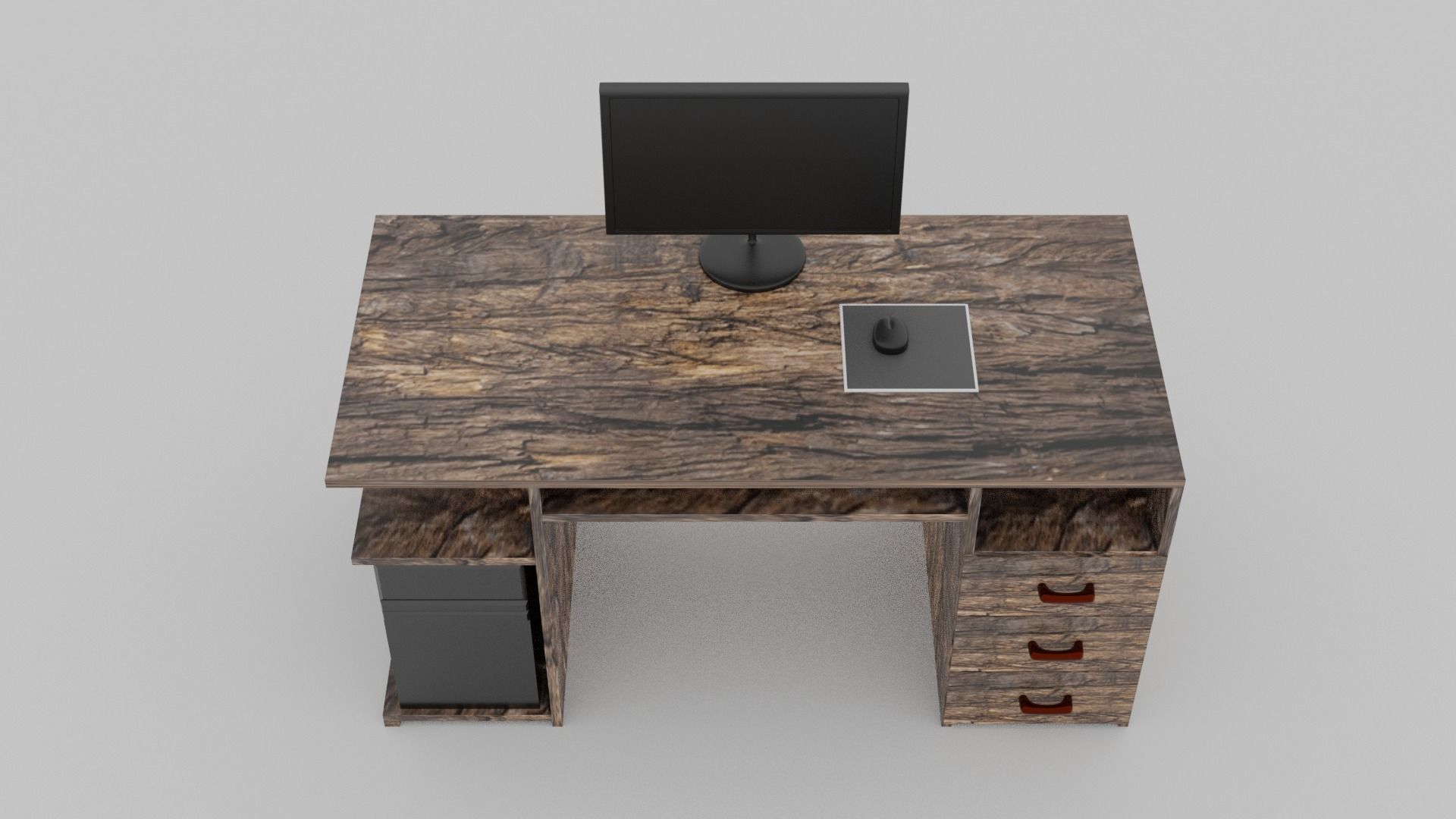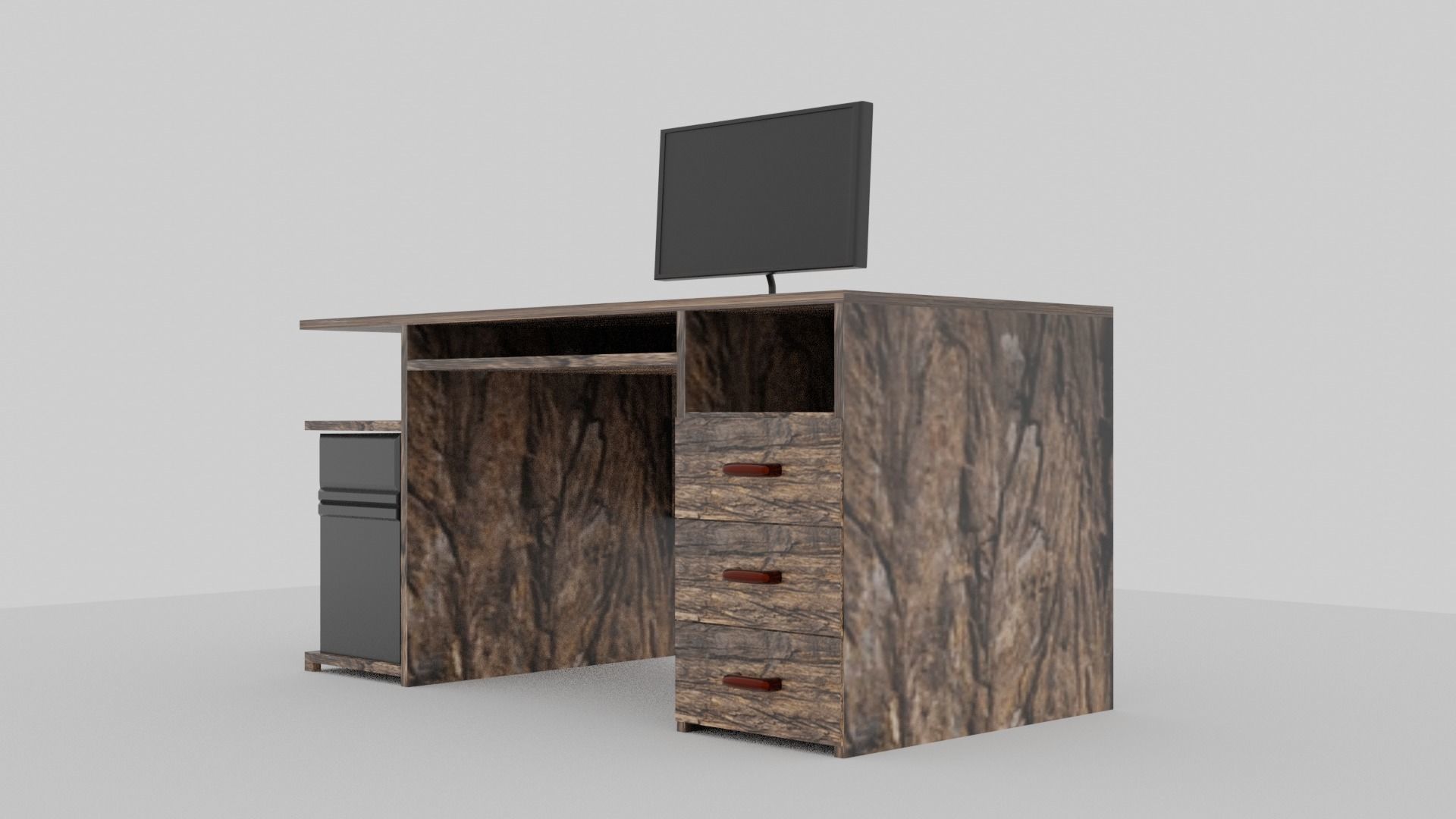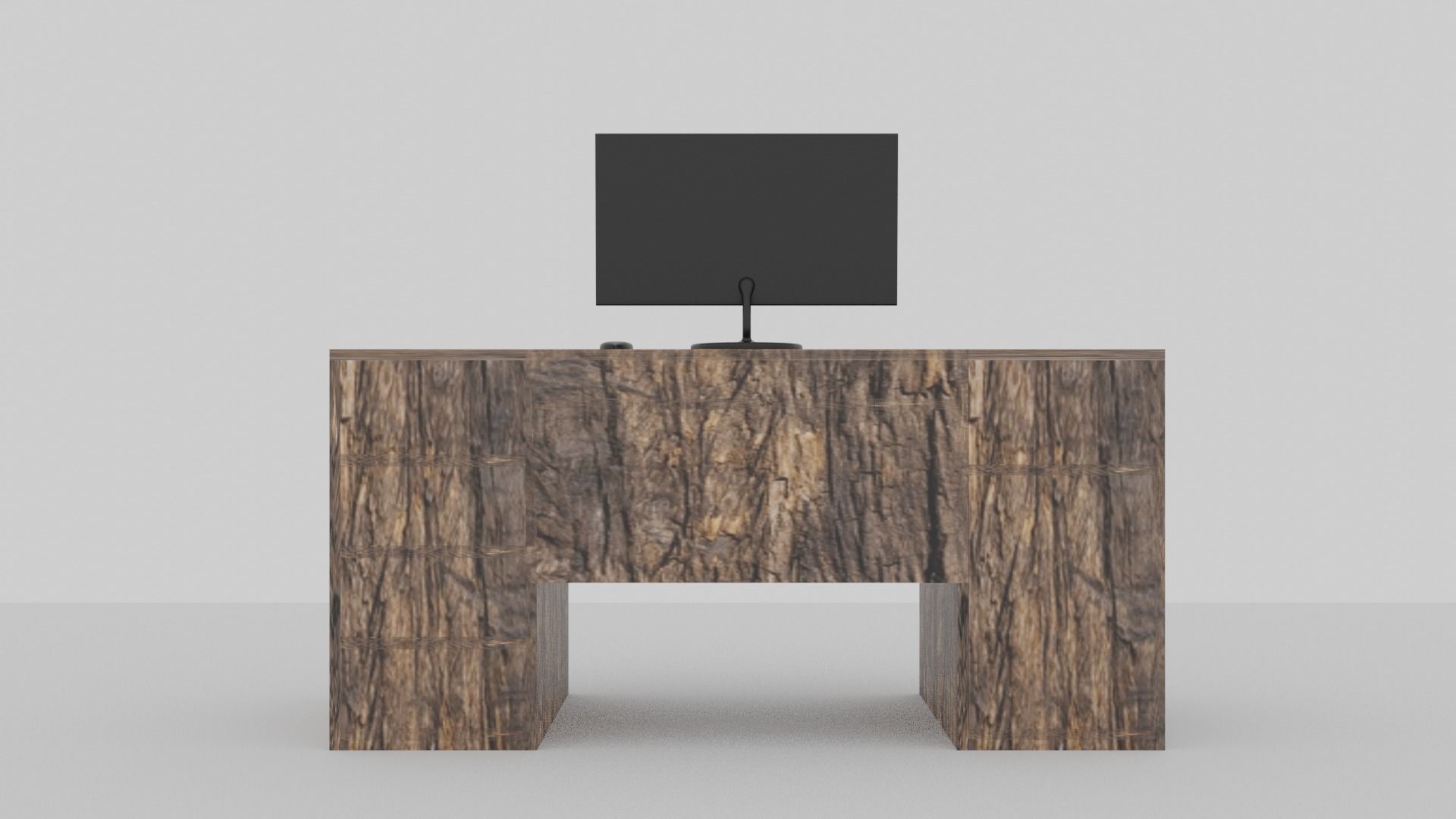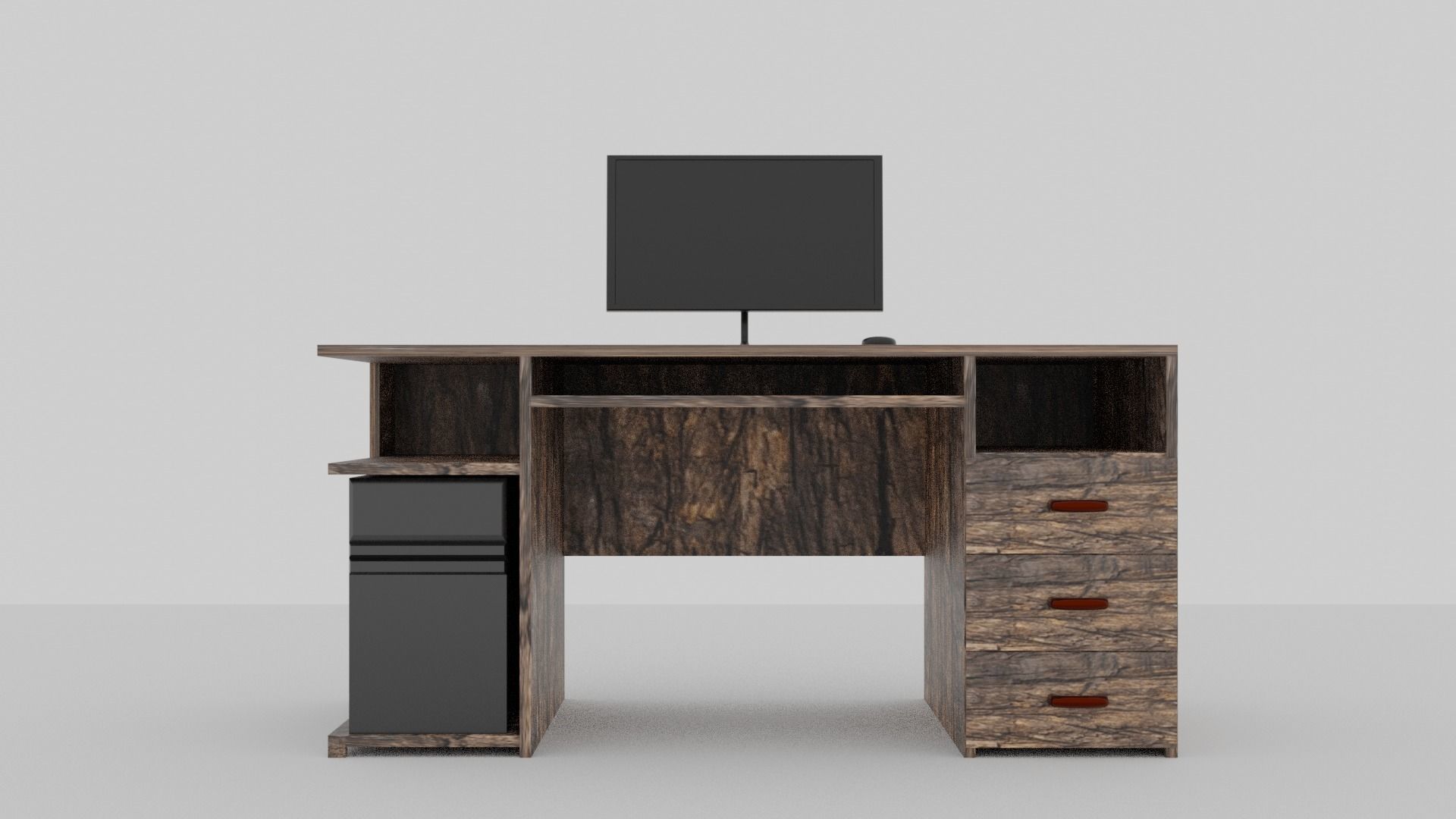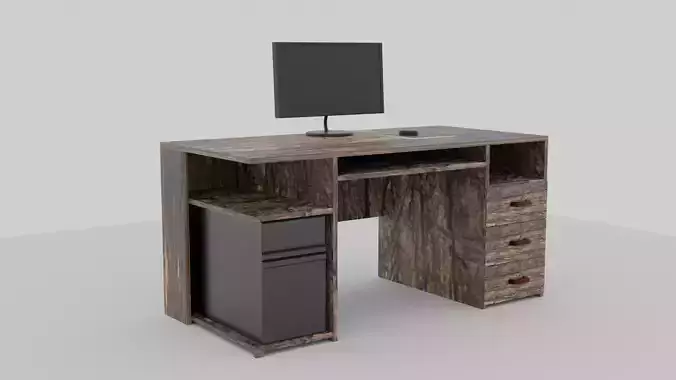
Computer Table Free low-poly 3D model
The most common form of the computer desk is a variant of the ergonomic desk, which has an adjustable keyboard tray and sufficient desktop space for handwriting. Provisions for a monitor shelf and holes for routing cables are integrated in the design, making it easier to connect the computer components together. The typical armoire desk provides space for a keyboard, mouse, monitor, printer and speakers. Cubicle desk designs for business and government workplaces include a range of shelves, trays and cable-routing holes for computer systems. In some computer desks, the cabling is affixed to the modesty panel at the back of the desk, to create a neater appearance.
There are a great variety of computer desk shapes and forms. Large multiple student computer desks configured in rows are designed to house dozens of computer systems while facilitating wiring, general maintenance, theft prevention and vandalism reduction. Small rolling lectern desks or computer carts with tiny desktops provide just enough room for a laptop computer and a mouse pad. Computer desks are typically mass-produced and require some self-assembly.
The computer itself is normally separate from the desk, which is designed to hold a typically sized computer, monitor and accessories. Cabling must be routed through the channels and access openings by the user or installer. A small number of computers are built within a desk made specially for them, like the British i-desk. Various proposals for the Office of the future suggested other integrated designs, but these have not been taken up.
A rolling chair table configuration offers mobility and improved access in situations where a desk is not convenient. Gyratory computer tables can be used over a bed. Modular computer tables separate user interface elements from the computing and network connection, allowing more placement flexibility. The modules are connected via wireless technology.
